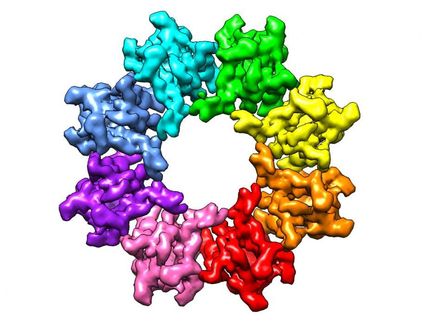Lasers Key to Handheld Gas and Liquid Sensors
Ga Tech developing instant-response trace sensors
Current technology is too cumbersome for rapid detection and response. But new advances in liquid and gas phase chemical sensing being made at the Georgia Institute of Technology may lead to the development of palm-sized sensing tools that can provide the instant detection.
Using small quantum cascade lasers, researchers at Tech, along with colleagues from Tel-Aviv University and OmniGuide Communications, have built and demonstrated a prototype handheld gas phase chemical sensing device and a liquid phase sensing device. The quantum cascade laser is the key to scaling down midinfrared chemical sensing tools to fit in the palm of the hand, said Boris Mizaikoff, associate professor in the School of Chemistry and Biochemistry at Georgia Tech.
"This diode laser light source emits midinfrared frequencies, operates at room temperature and is small - roughly the same size as the laser you use in a laser pointer or CD player," said Mizaikoff.
Almost every organic molecule has a very distinctive absorption pattern in the midinfrared range (roughly between three and 20 microns) Illuminating molecules with a laser tuned to its fingerprint frequency will cause the molecules to vibrate as they absorb radiation at that frequency.
Detecting a chemical is as simple as illuminating a small volume of gas or liquid with a laser. If the laser is tuned to a characteristic absorption frequency of benzene, for example, and benzene is present, the molecules will vibrate and absorb an amount of radiation at its characteristic absorption frequency indicating its concentration.
"The quantum cascade lasers can be designed by bandstructure engineering to emit almost anywhere in the midinfrared band," said Mizaikoff. "So, if the molecule you want to detect has an absorption at 11 microns, you design a laser that emits precisely at that frequency. With the concept of the quantum cascade laser, that's possible for the first time."
For the gas sensing modules, Mizaikoff and his student Christy Charlton use a photonic band gap hollow waveguide (developed by OmniGuide), essentially a hollow, flexible tube, to both contain very small amounts of the air being sampled and assist in sensing. The waveguide can be built to propagate only one wavelength of light very well. So when the laser illuminates the gas molecules inside the waveguide, the waveguide will propagate only the selected fingerprint frequency for detecting a specific molecule.
"In our paper, we've shown that if we take only one meter of photonic band gap hollow waveguide with an inner diameter of 700 microns coupled to a frequency-matched quantum cascade laser, we've been able to detect levels down to 30 parts-per-billion (ppb) of ethyl chloride," said Mizaikoff. "In our opinion, it's among the most sensitive measurement that's been demonstrated in gas phase sensing in a hollow wave guide to date."
Gas sensing done this way requires a sample of only one milliliter of gas, compared to few hundreds of milliliters for other techniques using regular multi-pass gas cells, he added.
Original publication: Analytical Chemistry 2005; Applied Physics Letters 2005.
Most read news
Other news from the department science

Get the analytics and lab tech industry in your inbox
From now on, don't miss a thing: Our newsletter for analytics and lab technology brings you up to date every Tuesday. The latest industry news, product highlights and innovations - compact and easy to understand in your inbox. Researched by us so you don't have to.



























































